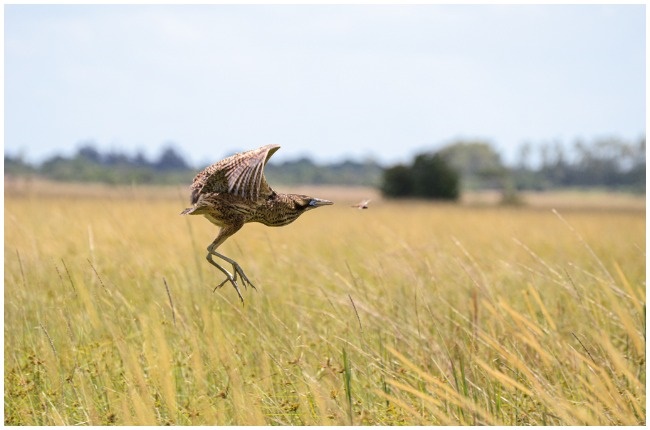
One morning in Mozambique
Landmines are at the forefront of my mind as I take my first steps off the track. It has only been a few years since the peace declaration between RENAMO and FRELIMO, and many parts of Mozambique are still decorated with signs warning, “Perigo minas!”
I doubt whether this remote floodplain north of Beira would have been a strategic target for landmining, and a few cows chomping on the grass lessen my fears… a bit. But with every step further into the waterlogged grass, dopamine is overtaking adrenaline in my bloodstream.
The shallow water is around that temperature when you start to wonder if you should drag yourself out of the bath, or top up the hot water. Small silvery fish dart away just as you’re about to step on them, and clouds of blue, red and green dragonflies flash past. But soon the tranquillity is shattered by shouts from the birders walking next to me: “Baillon’s crake!” as a small, dark blur erupts from the grass; “blue quail!” as a navy and terracotta streak flies past; “locust finch!” announcing a party of small seedeaters fluttering off.
I whip my binoculars this way and that, not knowing where to look first. Birding heaven! It had been a tough trip thus far. My dad was evacuated due to a severe infection that left him shivering under a blanket in 40° C heat. The only respite from the heat came from violent thundershowers.
We’re talking such volumes of water that my supposedly waterproof tent was transformed into a splash pool; my air mattress floating around like a lilo. One can only take so many nights of bush camping before your mind starts fantasising about a shower, a proper bed, and perhaps the ultimate symbol of luxury and extravagance, a toilet. Let’s not forget about flies, mosquitoes, ticks, snakes and other natural challenges.
And then there’s the standards of African travel: roadblocks, corrugated tracks, potholes, washed-away bridges, fallen trees, viscous black mud… But the birds more than made up for it. We had ticked 350+ species in 10 days. Listing them would just make you jealous, and this column illegible. But I filled my notebook with many, many species that I’d never written down before. And a few not again since.
I felt like a true explorer – Mozambique in the late 1990s had more forest and fewer roads. But let’s flash back to that morning on the floodplain… Sightings were still making my head spin – literally and figuratively.
Black coucal, great snipe, wattled crane, red-headed quelea, coppery sunbird and even the mythical lesser seedcracker were all part of the cast. But our main target was still eluding us: Botaurus stellaris, the star-spotted bellowing bull, or Eurasian bittern. Previously widespread in southern Africa, populations of this cryptic heron had dwindled over the years until completely disappearing off the birding radar.
Its scientific name comes from the deep booming call of the male, which is produced by inflating the oesophagus like a resonance chamber. On a quiet night, you can hear bitterns booming from 5 km away. After an hour’s slog through the marsh, my shins were crisscrossed by a thousand grass cuts and I was ready to call it a day. But Africa had one more surprise in store.
As I turned to retrace my steps, a huge, owlish shape materialized out of a sedge clump. “BITTERN!” I suspect my shout of pure excited ecstasy might also have been audible from 5 km away!




 Publications
Publications
 Partners
Partners




